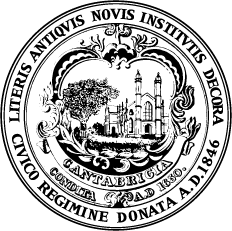From the beginning of English settlement in New England through the Revolutionary War, people in need turned to families, neighbors, and their church for help. Any without support became the town’s responsibility; children might be bound out as apprentices or servants, and adults hired as laborers.
Cambridge’s first two almshouses were in existing buildings: the first in Harvard Square in 1779, and its successor in North Cambridge in 1786. The third, built in 1818 near today’s Sennott Park, burned in 1836. The fourth was built on land purchased by the town in 1838. The 11 acres along the Charles River, from Western Avenue almost to River Street, accommodated an Almshouse and town farm. The property’s value increased substantially, and in 1849, the town sold it to a publisher who converted the brick Almshouse into a book manufactory that became the nucleus of the Riverside Press.
A new town farm soon opened near Alewife and Tannery Brooks. The City awarded the contract for a new poorhouse to the team of Rev. Louis Dwight, a leader in the prison reform movement, and Gridley J.F. Bryant, a prolific Boston architect. Completed in 1851, the new building was constructed of gray-green and ocher ledgestone quarried by the Almshouse residents. The central core contained offices and communal rooms. Men and women were segregated: they slept in different wings, attended separate workshops, and ate in two dining rooms. The superintendent (also called the warden or keeper) and his family occupied private parlors and bedrooms in the third wing.
Able-bodied residents were expected to work on indoor tasks, on the farm, in the quarry, or hauling waste. Their labors helped sustain the Almshouse and pay for a visiting physician, fuel, and meat from local butchers.
By 1913, the Almshouse residents were primarily the elderly and sick poor. The farm was operating at a loss. The Almshouse was renamed the City Home for the Aged and Infirm, and hospital facilities were added. (Later, a new City Home, now called Neville Place, was built at 650 Concord Avenue, overlooking Fresh Pond.) The old Almshouse was sold to the Archdiocese of Boston in 1929, which sold it to the International School of Boston in 2005.
Avon Home for Cambridge Children
James Huntington was saddened by the destitute, parentless children he encountered daily on the walk between his jeweler’s shop in Harvard Square and his house on Avon Hill Street. In May 1874, he built a new, fully furnished orphanage at 32 Avon Hill Street with space for 10 youngsters.
Huntington could not maintain the institution on his own. In November 1874, he transferred the Home’s administration to a Board of Trustees that raised funds, made policy, and even did household tasks. Cantabrigians generously contributed money, food, furnishings, books, toys, and country excursions. A local inn donated an adjoining lot for a playground. The Trustees wanted to create a family-like setting and arranged for the children to attend school and Sunday School and receive free medical care from local physicians. In 1879, a three-story wing with room for 15 more children was added to the Home, but the need continued to exceed the available space.
In 1889, a successful fund-raising campaign enabled the Avon Home to open a spacious new building at 309 Mt. Auburn Street. As models of care evolved, the Home began a trial foster care program. The new approach was so effective and successful that, in 1913, the Trustees voted to close the orphanage and operate solely as a child-placement agency. A decade later, the organization opened the Avon Hill Community Center at 1000 Massachusetts Avenue. It continued its work in foster care and invited neighborhood kids to enjoy workshops and a new playground.
In 1945, the Community Center closed, and the offices moved to Church Street, where the agency continued to enhance its community services. In 1965, the Avon Home became part of Cambridge Family & Children’s Services, now Bridges Homeward, which still continues to advocate for children today, ensuring they are in stable, safe, and loving homes.






